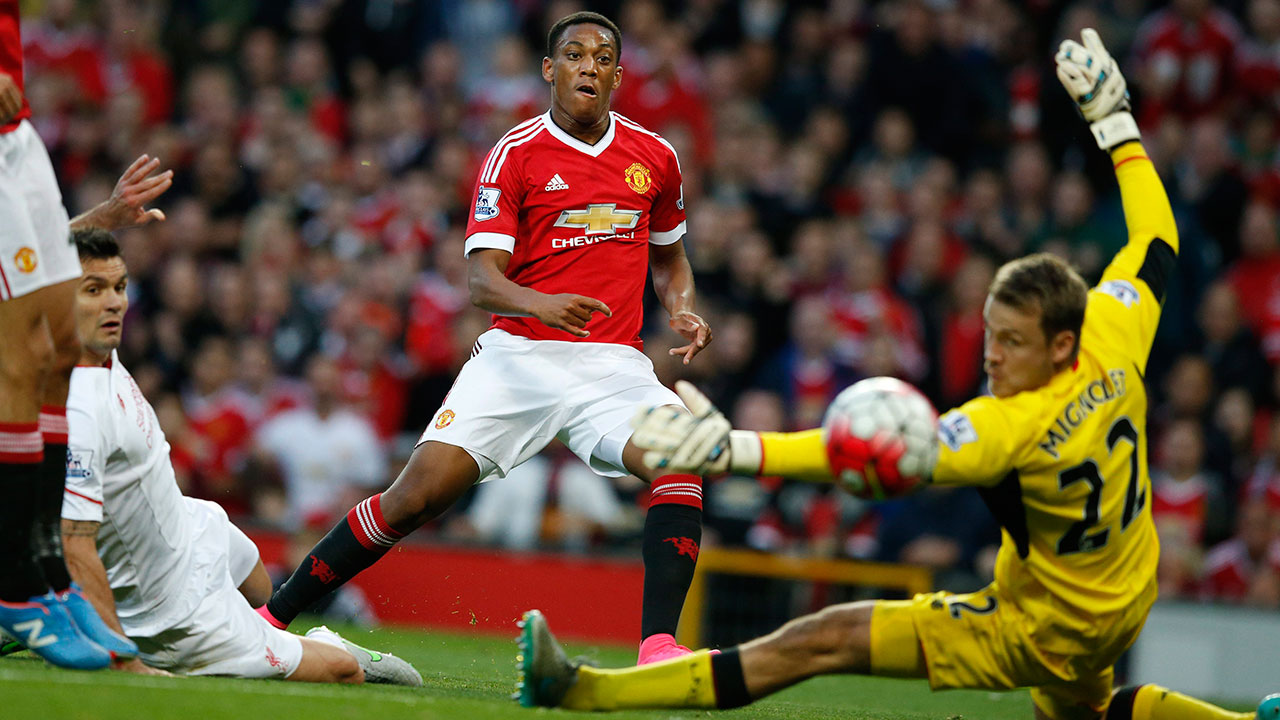Group B of the UEFA Champions League is at a deadlock heading into Matchday Three. With Manchester United, PSV Eindhoven, Wolfsburg and CSKA Moscow all tied with three points and 0 goal differential, it’s difficult to pick these teams apart.
Has each club tried to transition their playing styles, tendencies and shapes from their domestic leagues to the Champions League group stage? Have they identified a deficiency in comparison to their European opponents and compensated accordingly?
As teams enter a European competition with better opponents than they consistently face back home, it is not uncommon for managers to tweak tactical priorities in reaction.
MORE ON THE UEFA CHAMPIONS LEAGUE: Sportsnet soccer panel: Picks and predictions || Arsenal poses a challenge for Bayern Munich || Analytics: Man United, Wolfsburg have edge in tight group || BATE Borisov puts hockey-mad Belarus on the soccer map || 5 stories to watch this week
As for the teams that face similar competition on a regular basis in their domestic league, it is equally as important to impress your stylistic will and stamp your playing style in Europe while remaining humble and flexible.
We can break down comparable performance of the teams into three rough categories to attempt to understand this better: offence, defence and passing. Although each grouping of statistical categories is a rough collection and not a total understanding of each facet of a team’s game, it serves to give us a better idea of how a club is playing.
As expected most of the teams have experienced diminished offensive stats in the Champions League as compared to their domestic league.
Some of the most striking differences are within CSKA’s inability to control the tempo of Champions League games—41.2 percent possession and 79.2 percent pass success rate—as compared to in the Russian Football Premier League—56 percent possession and 82.1 percent pass success rate.
In both of CSKA’s previous Champions League matches against Wolfsburg and PSV possession of the ball was an issue, as they looked to exploit their pace up front and on the flanks through longer, searching passes.
PSV has also struggled to create chances, as they have seen their shots per game statistic drop from 19.4 in the Eredivisie to just 10 in the Champions League, the lowest in the group.
As the teams attempt to deal with each opponent in their own way, patterns of play and style have emerged. Both Wolfsburg and Manchester United have employed similar strategies in both of their domestic leagues and have transitioned it to the Champions League.
Wolfsburg, playing with Bas Dost as the lone, target forward supported through an advanced attacking central midfielder and deep flank play, frequently chooses to attack through longer passes in both the Bundesliga (49 accurate long passes per game, and 2.2 long key passes per game) and in the Champions League (47 accurate long passes per game, two long key passes per game).
Manchester United, playing with flank midfielders that enjoy to pinch inside towards the formation and link up with short, have passing patterns that have translated their possession game from the Premier League (57 percent possession, 578.7 total successful passes per game, 456.9 accurate short passes per game) to the Champions League (56.4 percent possession, 525 total successful passes per game, 403 accurate short passes per game). Their 4-2-3-1 formation is predicated on deep midfield protection from the two midfielders shielding the back four, offensive combination high up the pitch and wide defenders providing the offensive width—there hasn’t been many deviations in the Champions League from these ideas from Manchester United.
CSKA has had to do a lot of defending, make a lot of saves and attempt to counter attack with pace and efficiency. Their tackles per game (28), saves per game (6) and shots allowed per game (17.5) in the Champions League have all spiked from 21.9, 2.9 and 10.4 respectively in the Russian League.
Manchester United, on the other hand, have remained fairly staunch defensively and seem to have mustered up the Champions League experience and quality to control the underlying defensive statistics (six shots allowed and 1.5 saves per game).
There seems to be some statistical definition to Group B that the tied points totals and goal differential don’t allude to.
The two teams most poised to win the group are Manchester United and Wolfsburg. Both sides have offensively transitioned to the Champions League well by not deviating drastically from their stylistic and formational pillars in their domestic leagues. They have offensively controlled possession rate, shots per game, total successful passes per game, and have defended well with low shots allowed and saves per game numbers.
PSV seems to be the wildcard of the group. With a great deal of statistical fluctuation between their domestic league and Champions League form, it’s a side that’s hard to pinpoint. Although their offensive statistics in the group stage are not great, their domestic statistics allude to a side that has scoring potential, the ability to create scoring chances and counter attack through long, direct balls quickly.
CSKA is clearly struggling the most to deal with the quality of teams in the group. The lack of possession, total successful passes and pass success rate in combination with their high quantities in defensive categories such as shots allowed, tackles and saves per game do not bode well for their chances of advancing.
Offensive Radar ranges adjusted based on league maximum and minimums. Max and Min values for domestic leagues aggregated among Russian League, Bundesliga, Premier League and Eredivisie. Max and Min values for Champions League aggregated among Group B competition.
Stats courtesy of Opta. Radar template courtesy of Kyle Boddy
Coleman Larned is soccer analytics writer based in Antwerp, Belgium. Follow him on Twitter




